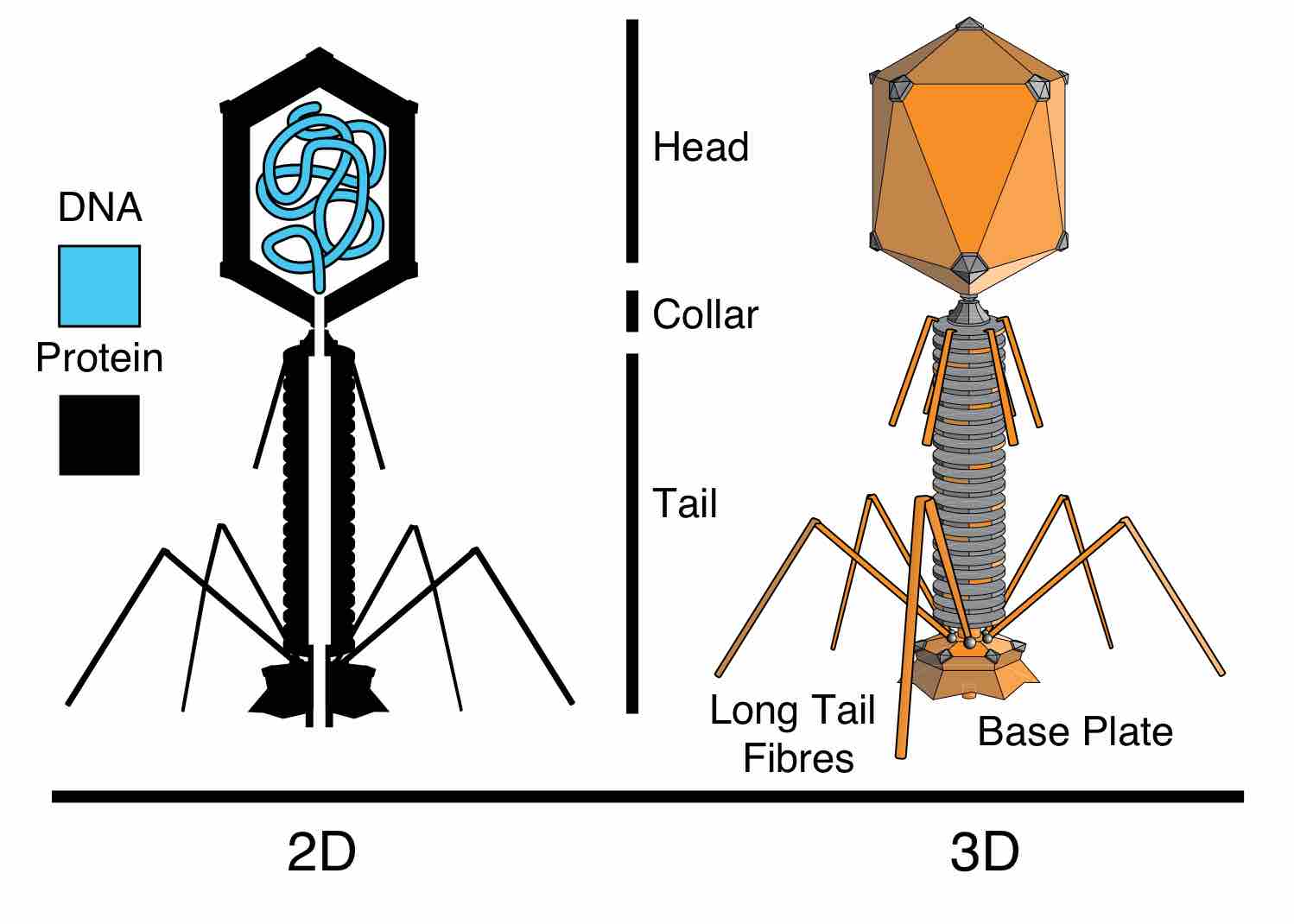Bacteriophage Mu, or phage Mu, is a temperate bacteriophage, a type of virus that infects bacteria. It belongs to the family Myoviridae , and consists of an icosahedral head, a contractile tail, and six tail fibers.

Myoviridae
Structural overview of the T4 phage, from the same family (Myoviridae) as Mu bacteriophage.
All of the known temperate phages employ one of only three different systems for their lysogenic cycle: lambda-like integration/excision, Mu-like transposition, or the plasmid-like partitioning of phage N15.
Mu bacteriophage uses DNA-based transposition to integrate its genome into the genome of the host cell that it is infecting. It can then use transposition to initiate its viral DNA replication. Once the viral DNA is inserted into the bacteria, the Mu's transposase protein/enzyme in the cell recognizes the recombination sites at the ends of the viral DNA (gix-L and gix-R sites) and binds to them, allowing the process of replicating the viral DNA or embedding it into the host genome. A transposable element (TE) is a DNA sequence that can change its relative position (self-transpose) within the genome of a single cell. The mechanism of transposition can be either "copy and paste" or "cut and paste. " Transposition can create phenotypically significant mutations and alter the cell's genome size.
Mu phage transposition is the best known example of replicative transposition. Its transposition mechanism is somewhat similar to a homologous recombination. Replicative transposition is a mechanism of transposition in molecular biology, proposed by James A. Shapiro in 1979, in which the transposable element is duplicated during the reaction, so that the transposing entity is a copy of the original element. In this mechanism, the donor and receptor DNA sequences form a characteristic intermediate "theta" configuration, sometimes called a "Shapiro intermediate. " Replicative transposition is characteristic to retrotransposons and occurs from time to time in class II transposons.